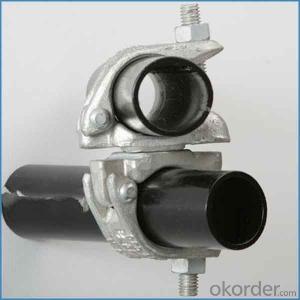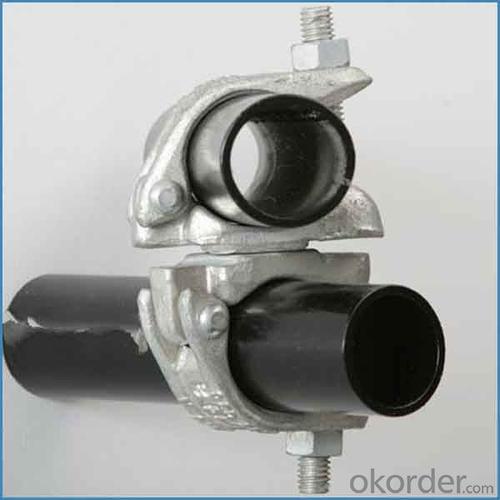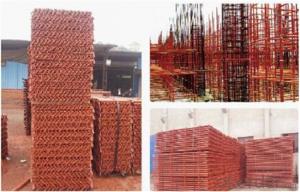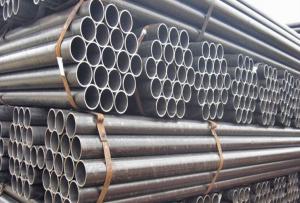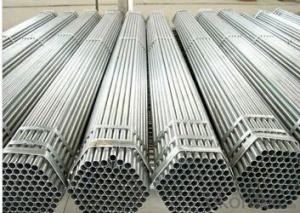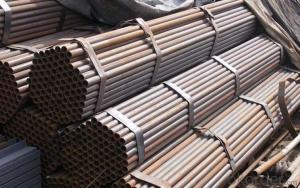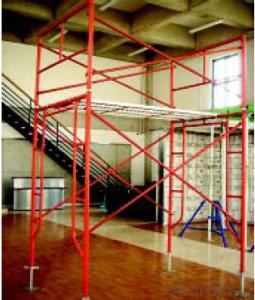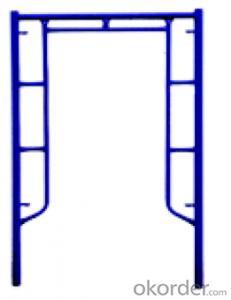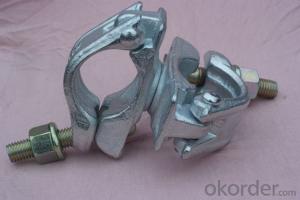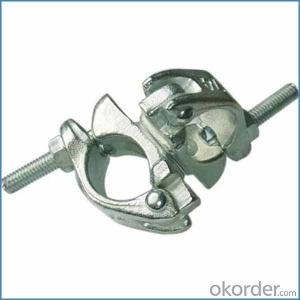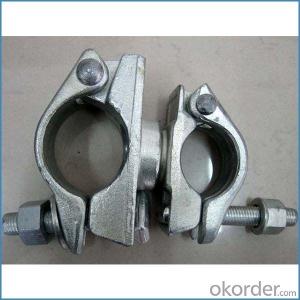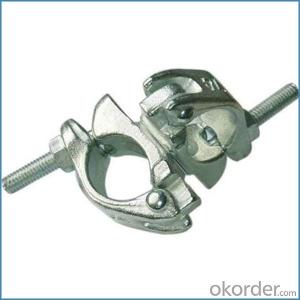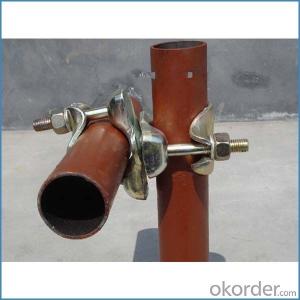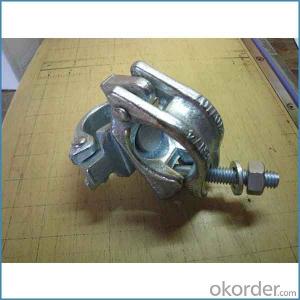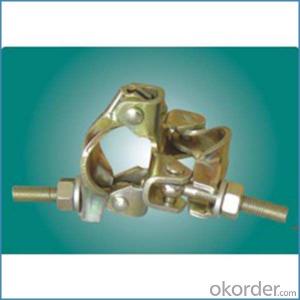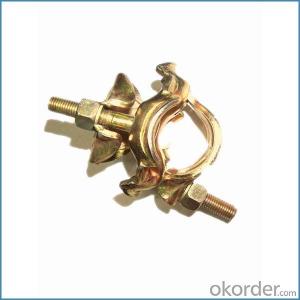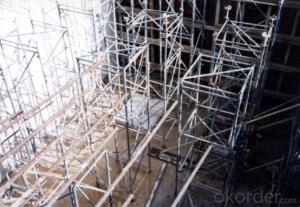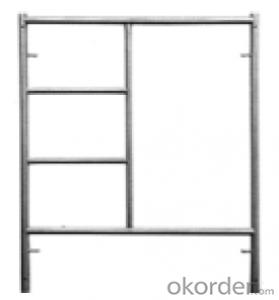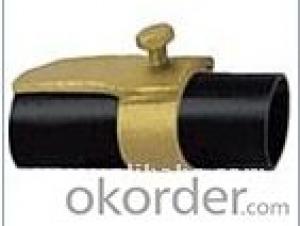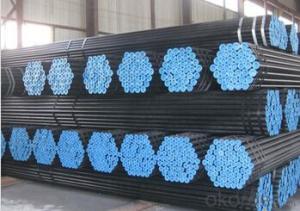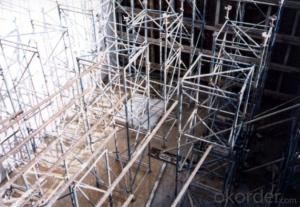Type for Sales Of Couplers British Type for Sale
- Loading Port:
- Tianjin
- Payment Terms:
- TT OR LC
- Min Order Qty:
- 1000 kg
- Supply Capability:
- 100000 kg/month
OKorder Service Pledge
OKorder Financial Service
You Might Also Like
Type for Sales Of Couplers British Type for Sale
Description
1.The scaffolding coupler is always used to connect the steel pipe as scaffolding system.
2.The often used coupler is swivel coupler and righ angle coupler .
3.We can provide types of scaffolding coupler according to your requirement.
4.Couoler can fix the 48.3mm scaffolding steel pipe tightly and make the whole scaffolding system more steadily.
5.Material:Q235 steel
6.Overall Size:48.3mm*48.3mm
7.Surface Finish: Galvanized/ Painted
8.Standard:BS1139,EN74
9.Package:25pcs/bag
10.Manufactuering as per customer requirements
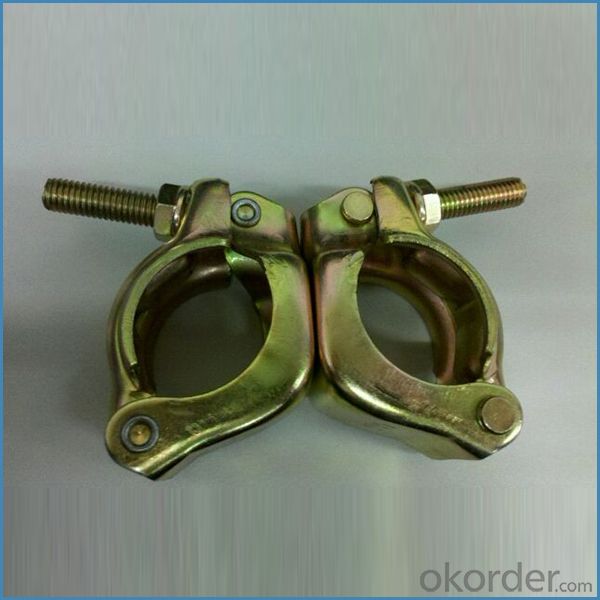
Feature
(1)Excellent Anti-Breaking—Cold Pressed Steel
(2)Outstanding Resistance Deformation
(3)Strong Anti-Dropping Ability
(4)Longtime USe
(5)Qualtity Guaranteed
(6)OEM Service
Photo
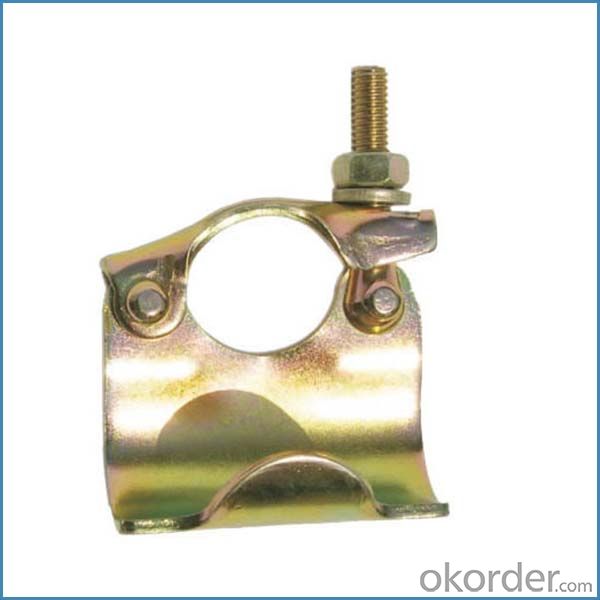
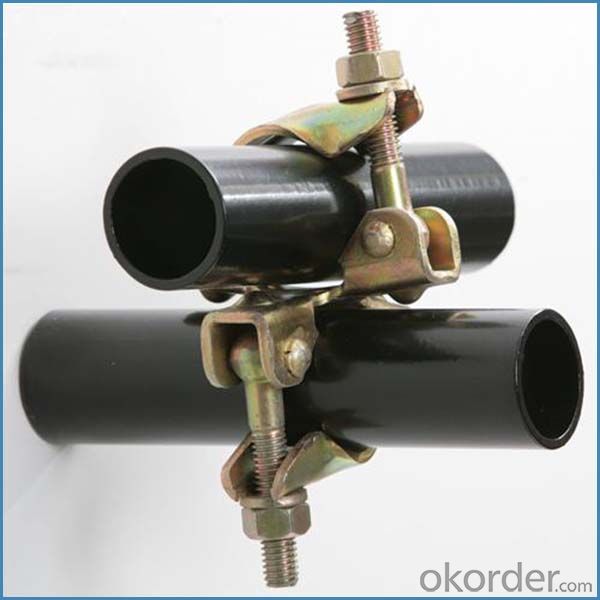
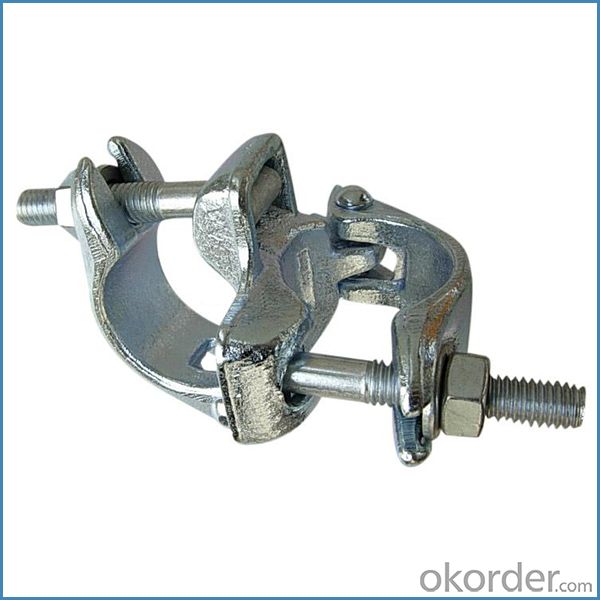
Parameter
| Material | Q235,345steel |
| Size | 48.3mm*48.3mm |
| Surface finish | Galvanized |
| Weight | 1.1kg around |
| Standard | BS1139,EN74 |
| Package | 25pcs/bag,steel pallet |
| Manufacture | As per customer requirement |
| Market | Africa, South America, the Middle East and Asia |
FAQ
Q: Are you a factory or trading company?
We are a state-owned corporation in China,dealing with various kinds of building materials.We have our holding subsidiaries.
Q: Where is your factory located? How can I visit there?
Our factory is located all around China.
Q: Can I get some samples?
Sample is free, customer only pay freight for the first time.
Q: Delivery?
10-30days. (5-15 containers)
Any question,feel free to contact us.
- Q: Can steel tube couplers be used for creating cantilevered or suspended scaffolding structures?
- Yes, steel tube couplers can be used for creating cantilevered or suspended scaffolding structures. Steel tube couplers are commonly used in scaffolding construction as they provide a secure connection between tubes, allowing for safe and stable scaffolding structures. Whether it is a cantilevered or suspended scaffolding structure, the use of steel tube couplers ensures the required strength and stability for supporting workers and materials at various heights.
- Q: Can steel tube couplers be used in extreme weather conditions?
- Yes, steel tube couplers can be used in extreme weather conditions. Steel is a durable and strong material that can withstand harsh weather conditions such as extreme heat, cold, rain, and snow. Steel tube couplers are commonly used in construction projects and infrastructure that are exposed to various weather conditions and they are designed to provide reliable and long-lasting performance even in extreme weather.
- Q: What are the design requirements for fastener type steel pipe scaffolds
- Fastener appearance quality requirements: there are cracks, deformation or bolt sliding wire fastener is strictly prohibited to use; 4 set up the template bracket with the steel pipe, fasteners, must be used before the sampling test, the number of sampling according to the relevant provisions of the implementation
- Q: Can steel tube couplers be used in scaffolding projects with limited space?
- Yes, steel tube couplers can be used in scaffolding projects with limited space. Steel tube couplers are versatile and can be used to connect scaffolding tubes at various angles, allowing for flexibility in designing scaffolding structures in tight spaces. These couplers are compact and do not require much additional space for installation, making them suitable for scaffolding projects where space is limited. Additionally, steel tube couplers have high load-bearing capacity, ensuring the safety and stability of the scaffolding structure even in restricted areas.
- Q: How do steel tube couplers work in scaffolding?
- Steel tube couplers in scaffolding work by connecting two steel tubes together to create a secure and stable structure. They are typically used to join horizontal and vertical tubes at right angles or in line with each other. The couplers feature a bolt and nut system that tightens and locks the tubes in place, ensuring a strong and rigid connection. This allows scaffolding to be easily assembled, disassembled, and adjusted to different heights and angles, providing a safe and efficient platform for workers to perform their tasks.
- Q: What are the different types of steel tube couplers?
- There are several types of steel tube couplers, including sleeve couplers, swivel couplers, and internal expansion couplers. Sleeve couplers are the most common type and are used to connect two tubes end-to-end. Swivel couplers allow for a 360-degree rotation and are used to connect tubes at different angles. Internal expansion couplers, on the other hand, are used to join tubes by expanding a tapered insert inside the tubes to create a secure connection.
- Q: Do steel tube couplers have any limitations in terms of temperature range for usage?
- Yes, steel tube couplers do have limitations in terms of temperature range for usage. While steel is known for its strength and durability, it is still affected by extreme temperatures. At low temperatures, steel becomes more brittle and prone to fracture. This can result in reduced load-carrying capacity and potential failure of the coupler. Therefore, it is important to consider the minimum temperature that the steel tube couplers will be exposed to and select a material grade that can withstand those conditions. Similarly, high temperatures can also have a negative impact on steel tube couplers. Excessive heat can cause the steel to lose its strength and structural integrity, leading to deformation or even collapse. The exact temperature limit will depend on the specific grade of steel and the type of coupling used. To ensure safe and reliable performance, it is crucial to consult the manufacturer's guidelines and specifications for the specific steel tube couplers being used. These guidelines will typically provide information on the recommended temperature range for usage, allowing users to operate within the specified limits and avoid potential failures.
- Q: How do steel tube couplers work in scaffolding?
- The construction of scaffolding systems heavily relies on steel tube couplers, as they offer a dependable and secure link between steel tubes. These couplers are specifically designed to connect two tubes, enabling them to be aligned and fixed in place, thus creating a stable and robust scaffold structure. The functioning of steel tube couplers is relatively straightforward. They consist of two primary components: a bolt and a nut. The nut possesses two flat ends and is threaded, while the bolt is also threaded and has a tapered end. During the assembly of the scaffolding, two tubes are positioned next to each other, with their ends overlapping. Subsequently, the coupler is placed over the two tubes, and the bolt is inserted through the holes present in both tubes. Finally, the nut is screwed onto the bolt. As the nut is tightened onto the bolt, it effectively pulls the two tubes together, resulting in a secure and tight connection. The tapered end of the bolt aids in this process by gripping the inner walls of the tubes, thereby preventing any potential movement or slippage. Furthermore, the threaded design of the nut and bolt ensures that the connection remains firm and stable, even under substantial loads or vibrations. Additionally, steel tube couplers are designed to be versatile, accommodating various configurations and angles in scaffolding construction. They are available in different types, including swivel couplers, sleeve couplers, and putlog couplers, each serving a specific purpose in joining tubes together at different angles and orientations. To summarize, steel tube couplers play an essential role in scaffolding by establishing a secure and reliable connection between steel tubes. Their uncomplicated yet efficient design guarantees a strong and stable scaffold structure, enabling workers to safely access and work at elevated heights.
- Q: How do steel tube couplers contribute to the overall safety of scaffolding structures?
- Steel tube couplers contribute to the overall safety of scaffolding structures by providing a secure and reliable connection between the tubes, ensuring stability and strength. These couplers are designed to withstand heavy loads and prevent any movement or slippage, reducing the risk of accidents or collapses. Additionally, their easy installation and versatility allow for quick and efficient assembly, further enhancing the safety of scaffolding structures.
- Q: Are steel tube couplers compatible with scaffolding safety nets and barriers?
- Steel tube couplers can be used in conjunction with scaffolding safety nets and barriers, as they are designed specifically to connect and secure scaffolding tubes, thereby creating a stable and secure structure. To prevent falls and safeguard workers, safety nets and barriers are typically fastened to the scaffolding structure. By utilizing steel tube couplers, these safety features can be securely attached to the scaffolding, ultimately ensuring a safe working environment. It is crucial to ensure the proper installation of the couplers and to design the scaffolding structure to adequately support the weight and load of the safety nets and barriers.
Send your message to us
Type for Sales Of Couplers British Type for Sale
- Loading Port:
- Tianjin
- Payment Terms:
- TT OR LC
- Min Order Qty:
- 1000 kg
- Supply Capability:
- 100000 kg/month
OKorder Service Pledge
OKorder Financial Service
Similar products
Hot products
Hot Searches
